 W
W20,000 Streets Under the Sky is a trilogy of semi-autobiographical novels by Patrick Hamilton.
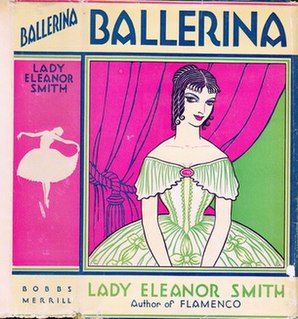 W
WBallerina is a 1932 novel by the British writer Eleanor Smith. It portrays the life of a great ballerina, and her eventual fall.
 W
WBefore the Fact (1932) is an English novel by Anthony Berkeley Cox writing under the pen name "Francis Iles". It tells the story of a woman marrying a man who is after her inherited money and prepared, it seems, to kill her for it. Whether he does succeed in the end, or whether she has been imagining his plots, is left unclear. Together with the previous Iles book Malice Aforethought (1931), it can be placed in the category of psychological suspense novel. Elements of the story were used for the 1941 American film Suspicion, directed by Alfred Hitchcock.
 W
WBlack Mischief was Evelyn Waugh's third novel, published in 1932. The novel chronicles the efforts of the English-educated Emperor Seth, assisted by a fellow Oxford graduate, Basil Seal, to modernize his Empire, the fictional African island of Azania, located in the Indian Ocean off the eastern coast of Africa.
 W
WThe Black Swan is a 1932 British historical adventure novel by the Anglo-Italian writer Rafael Sabatini. Like the author's earlier Captain Blood, it focuses on piracy in the seventeenth century Caribbean.
 W
WBrave New World is a dystopian social science fiction novel by English author Aldous Huxley, written in 1931 and published in 1932. Largely set in a futuristic World State, whose citizens are environmentally engineered into an intelligence-based social hierarchy, the novel anticipates huge scientific advancements in reproductive technology, sleep-learning, psychological manipulation and classical conditioning that are combined to make a dystopian society which is challenged by only a single individual: the story's protagonist. Huxley followed this book with a reassessment in essay form, Brave New World Revisited (1958), and with his final novel, Island (1962), the utopian counterpart. The novel is often compared to George Orwell's Nineteen Eighty-Four.
 W
WThe Bulpington of Blup, a 1932 novel by H. G. Wells, is a character study analyzing the psychological sources of resistance to Wellsian ideology, and was influenced by Wells's acquaintance with Carl Gustav Jung and his ideas.
 W
WFirst published in 1932, A Child of the Revolution is chronologically the last book in the Scarlet Pimpernel series by Baroness Orczy.
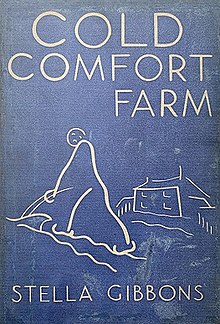 W
WCold Comfort Farm is a comic novel by English author Stella Gibbons, published in 1932. It parodies the romanticised, sometimes doom-laden accounts of rural life popular at the time, by writers such as Mary Webb.
 W
WDeath to the French is a 1932, novel of the Peninsular War during the Napoleonic Wars, written by C. S. Forester, the author of the Horatio Hornblower novels. It was also published in the United States under the title Rifleman Dodd.
 W
WDevil's Cub is a Georgian romance novel written by Georgette Heyer. Set in 1780, it is the sequel to These Old Shades (1926). The book was published in 1932, and has not been out of print since. It is one of Heyer's most popular novels.
 W
WDoctor Sally is a short novel by P. G. Wodehouse, first published in the United Kingdom on 7 April 1932 by Methuen & Co., London. In the United States, it was serialised in Collier's Weekly from 4 July to 1 August 1931 under the title The Medicine Girl, and was included under that name in the US collection The Crime Wave at Blandings (1937).
 W
WEvensong is a 1932 novel by the British writer Beverley Nichols. It was inspired by the life of the opera singer Nellie Melba, whom Nichols had known during her later years. The same year Nichols collaborated with Edward Knoblock on a play version which was a major hit in the West End.
 W
WThe Gap in the Curtain is a 1932 borderline science fiction novel by the Scottish author John Buchan. Part of the action is autobiographical, featuring the agonies of a contemporary up-and-coming politician. It explores the theory of serial time put forward by J W Dunne: Buchan had been reading An Experiment with Time.
 W
WGetaway is a mystery novel by Leslie Charteris first published in the United Kingdom in September 1932 by Hodder and Stoughton. This was the fifth full-length novel featuring the adventures of the modern day Robin Hood-inspired crimebuster Simon Templar, and the ninth Saint book published overall since 1928. When first published in the United States by The Crime Club in February 1933, the title was modified to The Saint's Getaway which was later adopted by future UK editions.
 W
WThe Girls of Radcliff Hall is a roman à clef novel in the form of a lesbian girls' school story written in the 1930s by the British composer and bon-vivant Gerald Berners, the 14th Lord Berners, under the pseudonym "Adela Quebec", published and distributed privately in 1932. Berners depicts himself and his circle of friends, including Cecil Beaton and Oliver Messel, as lesbian schoolgirls at a school named "Radcliff Hall". The indiscretions alluded to in the novel, including mutual fingering, cunnilingus, and "upskirting", created an uproar among Berners's intimates and acquaintances, making the whole affair highly discussed in the 1930s. Cecil Beaton attempted to have all the copies destroyed. The novel subsequently disappeared from circulation, making it extremely rare. The story is not included in the Berners anthology Collected Tales and Fantasies, but it was reprinted in 2000 thanks to the efforts of Dorothy Lygon.
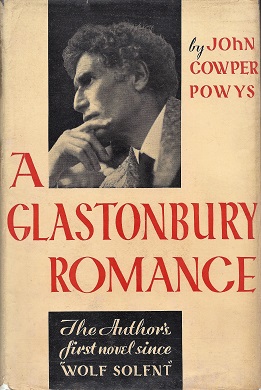 W
WA Glastonbury Romance was written by John Cowper Powys (1873–1963) in rural upstate New York and first published by Simon and Schuster in New York City in March 1932. An English edition published by John Lane followed in 1933. It is the second of Powys's Wessex novels, along with Wolf Solent (1929), Weymouth Sands (1934) and Maiden Castle (1936). Powys was an admirer of Thomas Hardy and these novels are set in Somerset and Dorset parts of Hardy's mythical Wessex. The action occurs over roughly a year, and the first two chapters of A Glastonbury Romance take place in Norfolk, where the late Canon William Crow's will is read, and the Crow family learn that his secretary-valet John Geard has inherited his wealth. Also in Norfolk, a romance begins between cousins, John and Mary Crow. However, after an important scene at the ancient monument of Stonehenge, the rest of the action takes place in or near the Somerset town of Glastonbury, which is some twenty miles north of the village of Montacute. Powys's father, the Reverend Charles Francis Powys (1843–1923), was parish priest of Montacute from 1885 to 1918, and it was here that Powys grew up. The grail legends associated with the town of Glastonbury are of major importance in this novel.
 W
WHave His Carcase is a 1932 locked-room mystery by Dorothy L. Sayers, her seventh novel featuring Lord Peter Wimsey and the second in which Harriet Vane appears.
 W
WHot Water is a novel by P.G. Wodehouse, first published on August 17, 1932, in the United Kingdom by Herbert Jenkins, London, and on the same date in the United States by Doubleday, Doran, New York.
 W
WThe House Under the Water is a 1932 novel by the British writer Francis Brett Young. It is one of his "Mercian novels", set in the West Midlands and Welsh borders.
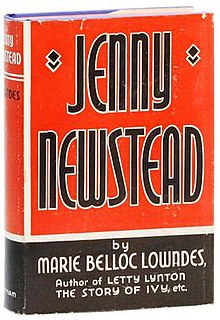 W
WJenny Newstead is a 1932 melodramatic suspense novel by the British writer Marie Belloc Lowndes. It is based on the story of the serial killer George Joseph Smith.
 W
WLast Men in London (1932) is a science fiction novel by British writer Olaf Stapledon.
 W
WLonely Road is a novel by British author Nevil Shute. It was first published in 1932 by William Heinemann and in the US by William Morrow. In 1936 it was adapted as a film, The Lonely Road, released in the US the same year as Scotland Yard Commands, starring Clive Brook and Victoria Hopper. The novel also served as the basis for an episode in the BBC series The Jazz Age in 1968.
 W
WThe Magic Walking Stick is a 1932 novel by the Scottish author John Buchan, his only novel written for children. The first edition was illustrated by John Morton Sale.
 W
WThe Master of the House is a novel written by Radclyffe Hall and published in 1932 — her first published work after her 1928 The Well of Loneliness. It depicts the life of carpenter Christophe Benedit, as well as of the other inhabitants of the small French town of St-Loup-sur-Mer.
 W
WThe Memorial is a 1932 English novel by author Christopher Isherwood. The novel tells the story of an English family's disintegration in the days following World War I. Isherwood's second published novel, this is the first of his works for which he adapted his own life experiences into his fiction.
 W
WThe Moon of Much Gladness is a fantasy novel by English writer Ernest Bramah, told by an unnamed narrator who may be Kai Lung, a fictional itinerant story-teller of ancient China from other books by Bramah. It was first published in hardcover in London by Cassell and Company, Ltd. in May 1932, and was reprinted in 1934. The first American edition was issued by Sheridan House in 1937.
 W
WPeril at End House is a work of detective fiction by British writer Agatha Christie, first published in the US by the Dodd, Mead and Company in February 1932 and in the UK by the Collins Crime Club in March of the same year. The US edition retailed at $2.00 and the UK edition at seven shillings and sixpence (7/6).
 W
WPeter Duck is the third book in the Swallows and Amazons series by Arthur Ransome. The Swallows and Amazons sail to Crab Island with Captain Flint and Peter Duck, an old sailor, to recover buried treasure. During the voyage the Wildcat is chased by another vessel, the Viper, whose piratical crew are also intending to recover the treasure.
 W
WThe Return of Bulldog Drummond was the seventh Bulldog Drummond novel. It was published in 1932 and written by H. C. McNeile under the pen name Sapper.
 W
WSafe Custody is a 1932 novel by the English author Dornford Yates. It was serialised weekly in five parts in The Saturday Evening Post in October and November 1931, as "Your Castle of Hohenems", illustrated by F. R. Gruger.
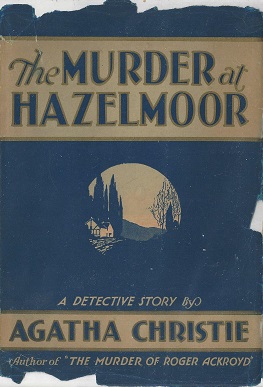 W
WThe Sittaford Mystery is a work of detective fiction by British writer Agatha Christie, first published in the US by Dodd, Mead and Company in 1931 under the title of The Murder at Hazelmoor and in UK by the Collins Crime Club on 7 September of the same year under Christie's original title. It is the first Christie novel to be given a different title for the US market. The US edition retailed at $2.00 and the UK edition at seven shillings and sixpence (7/6).
 W
WThe Soldier and the Gentlewoman is a 1932 novel by Welsh English-language writer Hilda Vaughan.
 W
WStamboul Train is the second significant novel by Graham Greene. Set on a train journey from Ostend to Istanbul, the book was renamed Orient Express when it was published in the United States. The novel appeared in 1932 and was Greene's first true success. It was taken on by the Book Society and in 1934 adapted as the film Orient Express.
 W
WThree Loves is a 1932 novel by A.J. Cronin about the loves of Lucy Moore – her husband, her son, and God. Initially published by Gollancz, the story demonstrates how a virtue can become a vice when misguided in seeking rewards other than those in and of itself. The self-satisfied Lucy loves her husband, yet she yearns to improve him so that she can love him even more. To teach him hospitality she invites Cousin Anna, against his protest, to their home. Anna's free and easy behavior soon makes Lucy forget hospitality, and she thinks only of her husband's possible infidelity, which eventually alienates him. When her husband is driven from the house, Anna goes with him, but he is drowned in the ensuing pursuit. Lucy then turns to her son, Peter, and works extremely hard so that he may become a doctor. She accepts no help and refuses to even marry in order to preserve the purity of her motives. Her motherly love is not so pure as she thinks; when Peter marries, her life is ruined once again.
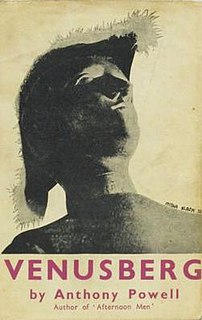 W
WVenusberg is the second novel by the English writer Anthony Powell. Published in 1932, it is set in an unidentified Baltic country which draws clearly on Powell's experiences in Finland and Estonia. Some see the novel as part of the Ruritanian tradition, perhaps a modernist pastiche of the form.